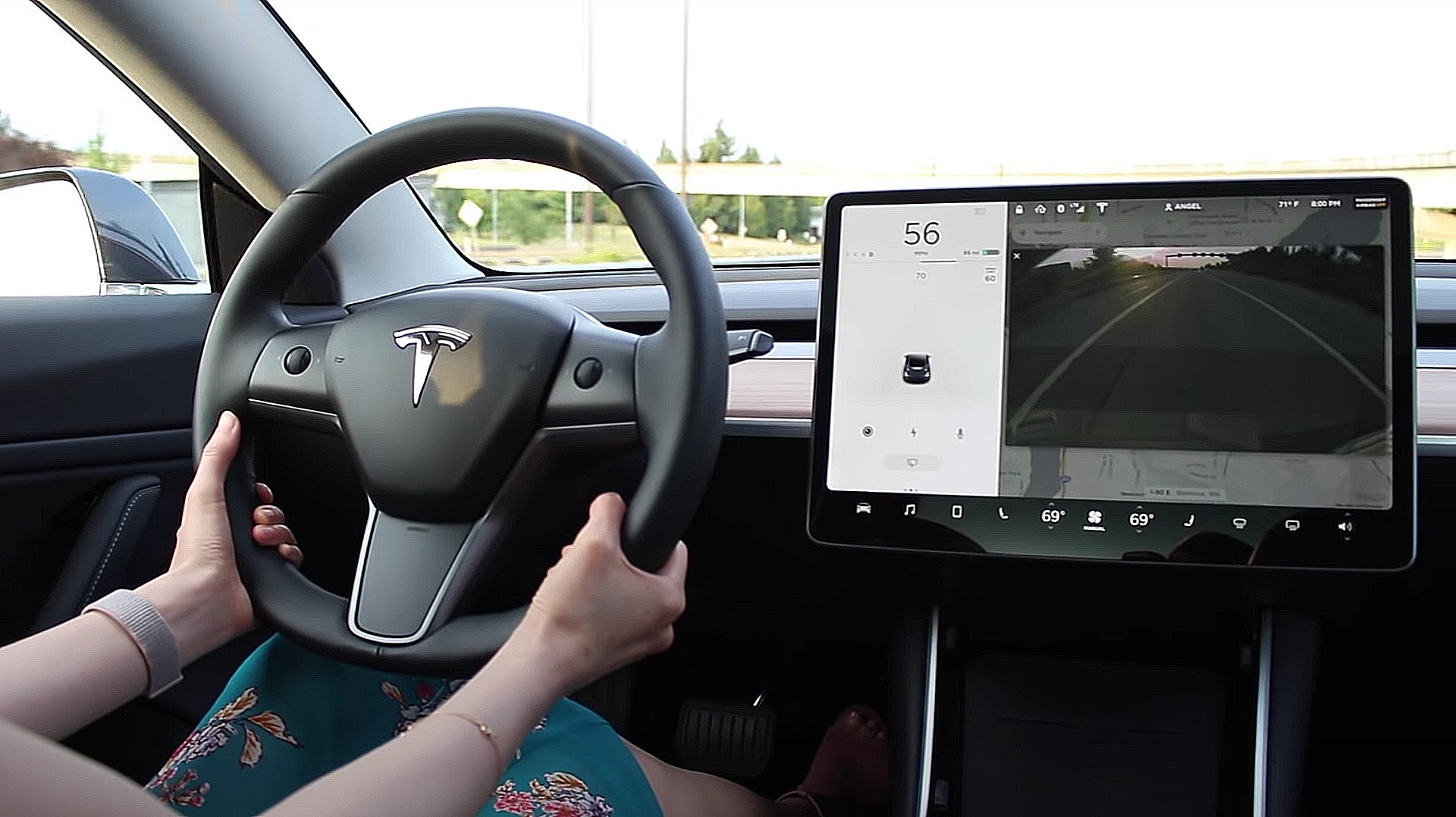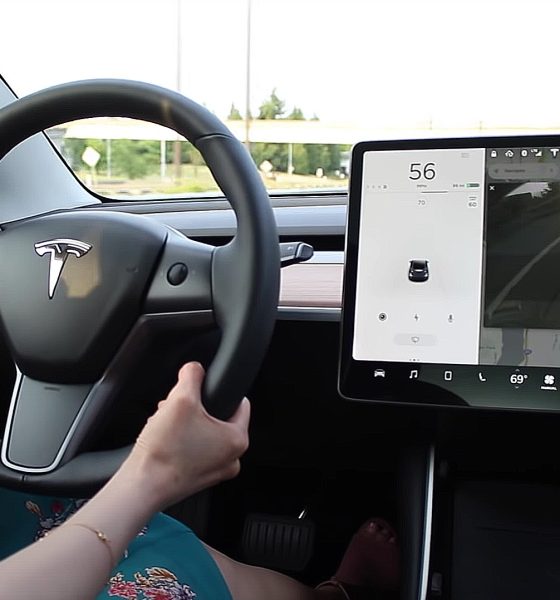

News
OPINION: Tesla’s ‘Safety Score’ Beta needs broader terms for factoring your score
Tesla’s “Safety Score” Beta is one of the most impressive ideas to improve driving safety, in my opinion. An article from Model 3 owner and Tesla enthusiast Nick Howard explained that Tesla is essentially gamifying the act of driving, encouraging owners to drive in a manner that would allow their scores to be higher. If you know anything about the Tesla community, you know that it is filled with die-hard fans who are satirically battling it out for the elusive 100 scores. While Tesla has outlined the ways that driving behaviors could affect the score for better or for worse, I believe that other instances may need to be outlined so owners are perfectly clear on how their score could be affected based on their hobbies or driving style. While I disagree with Consumer Reports’ assumption that the Safety Score is a bad idea (which, in reality, makes no real sense to me), I do believe that some owners are confused on what makes their score higher or lower, especially as many owners are attempting to enter the elusive Full Self-Driving Beta program.
If you’ve taken a peek at Tesla’s Support page that outlines the numerous factors that can affect a driver’s Safety Score, it seems pretty straightforward. There are cut and dry behaviors that tend to be recognized universally as “aggressive,” including tailgating, hard braking, and aggressive turning. Additionally, Forward Collision Warnings per 1,000 miles and forced Autopilot disengagements are also included in the behaviors that could affect your score, but these are exclusive to Tesla, of course, due to their use of Forward Collision Warnings and Autopilot disengagements.
Tesla introduces Safety Score (Beta) system that incentivizes safe driving
It’s very self-explanatory: Drive safely and receive a higher score. But are there not instances where things could get a tad confusing for some drivers, especially those with scores just below the perfect 100 threshold?
One example that I saw over the weekend was from Richard Marrero, a Tesla owner who was curious about taking his vehicle to the local racetrack. While Tesla owners are occasionally hitting the accelerator when a stoplight turns green, it may be understandable for Safety Scores to be affected. However, what if the nature of the driving occurs on a closed circuit? Marrero may drive like a saint on the road but might want to push his vehicle to the limit at a local dragstrip or raceway. After all, why have a high-performance car with face-melting acceleration if you can’t test it from time to time?
Does anyone know if taking my Tesla to a racetrack will hurt my safety score? @elonmusk @SawyerMerritt @DirtyTesla @tesla_raj @Teslarati
— Richard Marrero (@The_Richard_M) October 2, 2021
There are other examples that could affect a Safety Score that are technically out of the driver’s control. In some instances, it may be an action taken by the driver that is technically safer than other options, yet it could reduce the Safety Score. Tesla Joy, a Model 3 owner, encountered this predicament on October 1, according to a Tweet. Her Safety Score was reduced due to hard braking at a “quick changing yellow light.” I believe nearly everyone who has a driver’s license can attest that some stoplights are slightly more accelerated than others. Quick changing yellow lights are one of the most polarizing events in a daily drive. Some will tell you just to run through it, others will argue that the safer thing to do is just slow down and stop. Whichever way you choose to handle this scenario, you are likely to encounter someone who shares a point of view on how to handle the premature yellow light in a different manner.
Today I hard braked for 2 quick changing yellow lights & got dinged. I also sped up at another yellow light and didn’t get dinged but I felt more dangerous that way. Since Tesla car can see?, can hard braking at yellow light be exempt from penalty cuz it’s safer? ? @elonmusk
— Tesla Joy (@TeslaJoy) October 2, 2021
However, I don’t necessarily believe that there is a “wrong” way to handle it. While the right way to do it, according to my knowledge as a driver of over 11 years, would require you to slow down and come to a stop, especially since the yellow light is a key indicator of “slow down.” Tesla Joy did it as most Learner’s Permit booklets would describe, yet she was still docked points.
There are undoubtedly more examples of how Tesla could do a better job of explaining what actions are not favorable for the Safety Score system, and I would love to hear your thoughts or examples on things that have occurred that affected your score. Tesla did a wonderful job of outlining the most face-value actions that Safety Scores will be affected by, but there are other questions that need to be confronted so drivers are clear on what other things could hurt their scores. After all, the wider the FSD Beta testing group is, the more data Tesla will obtain through its Neural Network.
Don’t hesitate to contact us with tips! Email us at tips@teslarati.com, or you can email me directly at joey@teslarati.com.

News
Tesla FSD fleet is nearing 7 billion total miles, including 2.5 billion city miles
As can be seen on Tesla’s official FSD webpage, vehicles equipped with the system have now navigated over 6.99 billion miles.

Tesla’s Full Self-Driving (Supervised) fleet is closing in on almost 7 billion total miles driven, as per data posted by the company on its official FSD webpage.
These figures hint at the massive scale of data fueling Tesla’s rapid FSD improvements, which have been quite notable as of late.
FSD mileage milestones
As can be seen on Tesla’s official FSD webpage, vehicles equipped with the system have now navigated over 6.99 billion miles. Tesla owner and avid FSD tester Whole Mars Catalog also shared a screenshot indicating that from the nearly 7 billion miles traveled by the FSD fleet, more than 2.5 billion miles were driven inside cities.
City miles are particularly valuable for complex urban scenarios like unprotected turns, pedestrian interactions, and traffic lights. This is also the difference-maker for FSD, as only complex solutions, such as Waymo’s self-driving taxis, operate similarly on inner-city streets. And even then, incidents such as the San Francisco blackouts have proven challenging for sensor-rich vehicles like Waymos.
Tesla’s data edge
Tesla has a number of advantages in the autonomous vehicle sector, one of which is the size of its fleet and the number of vehicles training FSD on real-world roads. Tesla’s nearly 7 billion FSD miles then allow the company to roll out updates that make its vehicles behave like they are being driven by experienced drivers, even if they are operating on their own.
So notable are Tesla’s improvements to FSD that NVIDIA Director of Robotics Jim Fan, after experiencing FSD v14, noted that the system is the first AI that passes what he described as a “Physical Turing Test.”
“Despite knowing exactly how robot learning works, I still find it magical watching the steering wheel turn by itself. First it feels surreal, next it becomes routine. Then, like the smartphone, taking it away actively hurts. This is how humanity gets rewired and glued to god-like technologies,” Fan wrote in a post on X.
News
Tesla starts showing how FSD will change lives in Europe
Local officials tested the system on narrow country roads and were impressed by FSD’s smooth, human-like driving, with some calling the service a game-changer for everyday life in areas that are far from urban centers.

Tesla has launched Europe’s first public shuttle service using Full Self-Driving (Supervised) in the rural Eifelkreis Bitburg-Prüm region of Germany, demonstrating how the technology can restore independence and mobility for people who struggle with limited transport options.
Local officials tested the system on narrow country roads and were impressed by FSD’s smooth, human-like driving, with some calling the service a game-changer for everyday life in areas that are far from urban centers.
Officials see real impact on rural residents
Arzfeld Mayor Johannes Kuhl and District Administrator Andreas Kruppert personally tested the Tesla shuttle service. This allowed them to see just how well FSD navigated winding lanes and rural roads confidently. Kruppert said, “Autonomous driving sounds like science fiction to many, but we simply see here that it works totally well in rural regions too.” Kuhl, for his part, also noted that FSD “feels like a very experienced driver.”
The pilot complements the area’s “Citizen Bus” program, which provides on-demand rides for elderly residents who can no longer drive themselves. Tesla Europe shared a video of a demonstration of the service, highlighting how FSD gives people their freedom back, even in places where public transport is not as prevalent.
What the Ministry for Economic Affairs and Transport says
Rhineland-Palatinate’s Minister Daniela Schmitt supported the project, praising the collaboration that made this “first of its kind in Europe” possible. As per the ministry, the rural rollout for the service shows FSD’s potential beyond major cities, and it delivers tangible benefits like grocery runs, doctor visits, and social connections for isolated residents.
“Reliable and flexible mobility is especially vital in rural areas. With the launch of a shuttle service using self-driving vehicles (FSD supervised) by Tesla in the Eifelkreis Bitburg-Prüm, an innovative pilot project is now getting underway that complements local community bus services. It is the first project of its kind in Europe.
“The result is a real gain for rural mobility: greater accessibility, more flexibility and tangible benefits for everyday life. A strong signal for innovation, cooperation and future-oriented mobility beyond urban centers,” the ministry wrote in a LinkedIn post.
News
Tesla China quietly posts Robotaxi-related job listing
Tesla China is currently seeking a Low Voltage Electrical Engineer to work on circuit board design for the company’s autonomous vehicles.

Tesla has posted a new job listing in Shanghai explicitly tied to its Robotaxi program, fueling speculation that the company is preparing to launch its dedicated autonomous ride-hailing service in China.
As noted in the listing, Tesla China is currently seeking a Low Voltage Electrical Engineer to work on circuit board design for the company’s autonomous vehicles.
Robotaxi-specific role
The listing, which was shared on social media platform X by industry watcher @tslaming, suggested that Tesla China is looking to fill the role urgently. The job listing itself specifically mentions that the person hired for the role will be working on the Low Voltage Hardware team, which would design the circuit boards that would serve as the nervous system of the Robotaxi.
Key tasks for the role, as indicated in the job listing, include collaboration with PCB layout, firmware, mechanical, program management, and validation teams, among other responsibilities. The role is based in Shanghai.
China Robotaxi launch
China represents a massive potential market for robotaxis, with its dense urban centers and supportive policies in select cities. Tesla has limited permission to roll out FSD in the country, though despite this, its vehicles have been hailed as among the best in the market when it comes to autonomous features. So far, at least, it appears that China supports Tesla’s FSD and Robotaxi rollout.
This was hinted at in November, when Tesla brought the Cybercab to the 8th China International Import Expo (CIIE) in Shanghai, marking the first time that the autonomous two-seater was brought to the Asia-Pacific region. The vehicle, despite not having a release date in China, received a significant amount of interest among the event’s attendees.








